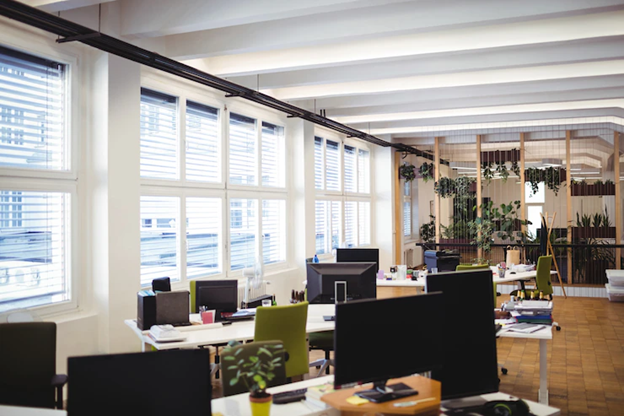Sensory-driven Design - Catering to the Five Senses

Tags: workplace, multisensory workplace, work environment, integrated facility management
When you enter a space, you take in a plethora of information about it. In fact, you start feeling in a certain way, maybe energetic, lethargic or calm. This is because your senses (i.e. taste, sight, smell, sound, and touch) are sending signals to your mind. They significantly influence your mood, behavior and vibe. Keeping this in mind, future-focused companies are starting to think of sensory-driven design for their facilities. This next-generation approach is equipped with enormous benefits. It aims to build an environment that caters to all five senses. This has the potential to create an extraordinary workspace for all employees.
Some companies have started to collaborate with architects and designers and study environmental psychology to build a perfect multisensory workplace. Such workplaces will maximize employee experience to increase productivity and efficiency.
Sensory-driven design is going to be a key element to consider for next-gen integrated facility management. Let us explore what multisensory design includes and how they appeal to the five senses.
Sight
The multisensory workplace of the future will consist of natural elements to create a biophilic environment in the workplace. So offices will be designed in such a way that employees have visual access to sunlight for a refreshing and energizing start. Such workplaces will also house green spaces with live plants. Visual access to nature can improve employees' circadian rhythms, significantly enhancing their work experience.
Touch
Multisensory design prefers embodying soft and comfortable touches to furniture surfaces and walls. Touch determines how warm, convenient, and restful the environment is for employees. For example, having leather on seats can be irritating to employees. Thus, chairs, surfaces, couches, desks, etc. should consider using materials that are suitable for most people.
Smell
The inclusion of smell is debatable in multisensory workspaces as some are overwhelmed with scents and sweet aromas, while others find them pleasant. This is why facility management companies prefer to use deodorizers to neutralize odors or scents, creating a neutral environment for employees. This also minimizes dangers for asthmatic employees, ensuring safety at the workplace. However, in workplaces that have meditation rooms, scented soaps or air diffusers can be used to create a relaxed atmosphere.
Taste
Companies with a vision to create sensory-driven workplaces will also aim to stimulate taste by installing healthy and tasty food in their pantry. This is an excellent replacement for the junk food and drinks that employees consume. Providing healthy food and beverages will also create healthy employee habits, something that can be used as an excellent strategy for employee retention as such efforts reveal how companies care about employees' health and well-being.
Sound
Sound is often perceived as unfavorable in the workplace. It dramatically impacts the concentration, performance and productivity levels of employees. Therefore, workplaces designed for multisensory needs will use sound barriers or sound-masking technologies in their offices. However, such workspaces may use lounge music in restrooms or peppy music in shared spaces such as cafeterias and game rooms to create spaces for varied employee experiences.
Workplaces created with sensory-driven design will be in high demand in the future as more and more companies prioritize employees' mental and physical health. With the work environment playing a significant role in employees' behavior and overall productivity, the future of workspaces are poised to be a treat for the senses!
